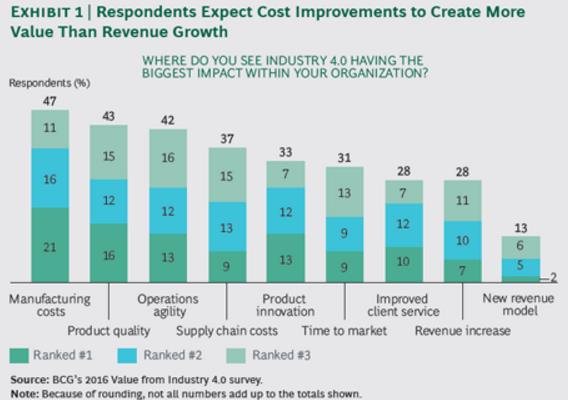Five Ways CPQ Is Revolutionizing Selling Today
 Configure-Price-Quote (CPQ) continues to be one of the hottest enterprise apps today, fueled by the relentless need all companies have to increase sales while delivering customized orders profitably and accurately. Here are a few of the many results CPQ strategies are delivering today:
Configure-Price-Quote (CPQ) continues to be one of the hottest enterprise apps today, fueled by the relentless need all companies have to increase sales while delivering customized orders profitably and accurately. Here are a few of the many results CPQ strategies are delivering today:
- Companies relying on CPQ are growing profit margins at a 57% greater rate year-over-year compared to non-adopters.
- 89% improvement in turning Special Pricing Requests (SPRs) into sales by automating them using a cloud-based CPQ system.
- 67% reduction in reworked orders at a leading specialty vehicle manufacturer due to quotes reflecting exactly what customers wanted to buy.
- 23% improvement in upsell and cross-sell revenue by having the CPQ system intelligently recommend the optimal product or service that has the highest probability of purchase and best possible gross margin.
- CPQ strategies excel when they are designed to reach challenging selling, pricing, revenue and operational performance goals versus automating existing selling workflows.
Another factor fueling CPQs’ rapid growth is how quickly results of a pilot can be measured and used for launching a successful company-wide launch. Pilots often concentrate on quote creation time, quoting accuracy, sales cycle reduction, automating Special Pricing Requests (SPRs), up-sells and cross-sells, perfect order performance, margin improvements and best of all, winning new customers. These are the baseline metrics many companies use to measure their CPQ performance. Throughout 2017 these metrics across industries are accelerating. There is a revolution going on in selling today.
5 Ways CPQ Is Revolutionizing Selling Today
Cloud- and SaaS-based CPQ solutions are quicker to implement, easier to customize to customers’ requirements, and available 24/7 on any Internet-enabled device, anytime. Many are designed to integrate into Salesforce, further accelerating adoption seamlessly. The following five factors are the primary catalysts revolutionizing selling today:
- Designing in excellent user experiences (UX) is the new normal for CPQ apps – CPQ vendors are competing with the quality of user experiences they deliver in 2017, moving beyond packing every feature possible into app releases. This is having a corresponding impact on adoption, increasing the number of sales representatives and entire teams who can get up and running fast with a new CPQ app. The net result is reduced sales cycles, growing pipelines, and more sales reps actively using CPQ apps to increase their selling effectiveness.
- Integrating with legacy CRM, ERP and pricing systems in real-time are using service-oriented frameworks gives sales teams what they need to close deals faster – Legacy CPQ systems in the past often had very precise field mappings to 3rd party legacy CRM, ERP and pricing systems. They were brittle and would break very easily, slowing down sales cycles and making sales reps resort to manually-based approaches from decades before. In 2017 there are service-oriented frameworks that make brittle, easily broken mappings thankfully an integration practice in the past. With a loosely coupled service framework, real-time integration between CRM and ERP systems can be quickly be implemented and sales teams can get out and close more deals. Leaders in the area include enosiX, who are enabling their customers’ sales forces to enter sales orders into SAP directly from Salesforce, saving valuable selling time and increasing order accuracy.
- Competing for deals using Artificial Intelligence (AI), machine learning and Intelligent Agents are force multipliers driving greater sales – Salesforce’s Einstein is an example of the latest generation of AI applications that are enabling sales reps and teams to gain insights that weren’t available before. Combining customer data with these advanced predictive data analytics technologies yields insights into how selling strategies for different accounts can customize to specific prospect needs. Selling strategies are more effective and focused when AI, machine learning, and Intelligent Agents are designed in to guide quoting, pricing and product configuration in real-time.
- CPQ apps optimized for mobile devices are enabling sales reps to drastically reduce quote creation times, sales cycles and increase sales win rates – For many companies whose sales teams are in the field calling on accounts the majority of the time, mobile-based CPQ apps are how they get the majority of their work done. Salesforce’s Force.com is one of the leading platforms CPQ software companies are relying on to create mobile apps, further capitalizing on the already-established levels of familiarity sales teams have with the Salesforce platform.
- The vision many companies have of synchronizing multichannel and omnichannel selling as part of their CPQ strategies is now attainable – One of the greatest challenges of expanding sales channels is ensuring a consistently high-quality customer experience across each. With on-premise CPQ, CRM and ERP selling systems, this is very challenging as there are often multiple database systems supporting each. This is a breakout year for omnichannel selling as cloud-based CPQ systems and the platforms they are built on can securely scale across all selling channels a company chooses to launch. Being able to track which CPQ deals emanated from which marketing program, and which channels are the most effective in closing sales is now possible.

































